The Latest Fashion of Faerun - Последняя мода - что носят в Фаэруне
Most folk in the Realms are wealthy enough to have extensive wardrobes, and do not stray far from practicality in everyday wear. Many have but one “fine wear” garment for special occasions.
Any city or market town will have seamstresses who alter garments, cut down clothing into other items, and dye and adorn clothes to make them flashier and stimulate sales. Adornments (cheap “feathers-and-buckles” jewelry employing enam¬eled metals, cut-glass false gems, and painted, dyed, and sculpted wire and cloth rather than expensive components) are always popular, and almost all new-garment clothiers in any city are accustomed to doing small on-the-spot alterations to make a sale.
Everyday Wear
Children are often clad in smocks (knee-to-calf- length loose “shirt dresses”), with leggings or pull-on hose (long stockings tied to an underbelt to keep them from “riding down”) with boots, clogs, slippers for indoor wear, or bare feet. Youths of both genders often wear hand-me- downs, and usually adopt a style to distinguish themselves from their parents’ generation (femi¬nine clothing rearranged and belted to bare one shoulder, or supplemented by scarves worn around shoulders or at wrists or belt). Adults tend to wear what’s best suited for work, with “fashion” outfits reserved for cities and large towns, market-moots, and special occasions. Both genders customarily wear breeches (lace- up-front trousers, often leather) and boots or covered-toe sandals. In hot climates, smocks and woven wide-brimmed hats are often worn, aug¬mented with leggings (worn under smocks when working in thorny fields and underbrush, and by women in winter for warmth, under gowns). It’s rare for men to wear gowns, but women often wear tunics and jerkins. Skirts (as opposed to gowns) are rare. Conservative gowns are ankle to mid-calf length, and expose little bosom, but there’s nothing daring about bared arms. In the Realms, a tunic is a long shirt, usually open-fronted and laced up, often gathered at the waist with a belt, and usually meant to be worn overlapping one’s breeches (though a light tunic may be tucked in at the waist). A Faerunian jerkin is a heavier fitted garment that fastens down the front or front side with a series of toggles and loops, and always overlaps breeches, often extending to not far above the knee. It often has shoulder padding and a stand- up collar, and might have external or internal pockets (a tunic never has pockets). With their clothing, Faerunians haughty or humble usually wear belts and baldrics (belts worn diagonally from waist to shoulder) to hold garments up, and to hang sheaths and scabbards for weapons or tools on. Popular augmentations are the tammalar, a baldric of many pouches (sometimes removable, but more often securely sewn on the bracelar, a leather wrist-bracer with pouches sewn to it (often used by merchants to hold ready coin when sell¬ing and the scrip, which in recent centuries has come to mean a large piece of leather or cloth with sewn-on ties or thongs, and sewn-on loops or sleeves for those ties to go through. It is gath¬ered up (around goods, to form a carrysack) into a bundle, and kept that way by threading ties through the sleeves (and a user’s belt, to carry it at the hip or hanging from the rear waist).Cloaks and Daggers
Nobility and the wealthy wear tailored, ankle- length greatcloaks for cold weather, and soft leather longcoats for driving rain, and when deep snow or heat makes a greatcloak too much. They also have what less wealthy Faerunians must make do with in all kinds of bad weather: weathercloaks. These are near-ankle-length cloaks, lighter than leather and lacking fastenings beyond brooches (pins). A weathercloak tends to blow about, and provides poor protection against cold, because it clings tightly to the arms and shoulders when pinned shut. Folk also wear swirlcloaks (half-cloaks worn for looks rather than utility, that hang from one shoulder and usually drape to just below the waist), and shoulder-cloaks (shawls, always cloth lined with cloth and never an open-work weave). . A conservative rural or town matron would wear ankle-length gowns with a shoulder-cloak. (If gardening or out walking in wet conditions or muddy places, she wears breeches and leather boots under her gowns, and might hike up gowns to her knee and belt them up at that length.) Thin, “for looks” cloaks are habitually con¬structed with a pocket along collar or shoulders, so the cloak can be rolled tightly, stuffed into this pocket, and the result hung from a belt or around the wearer’s neck on its own sewn-on thong. Some heavier cloaks sport drawstring-closed (and then knotted) miniature pockets along lower edges, for easily carrying emergency coin (fares for conveyances, a night’s lodging, a meal), and to double as weights to keep the cloak down in a breeze (prevents embarrassment or momentary blinding by having a cloak blow up into the wear¬er’s face). Expensive cloaks have a deep, small-opening “handy pouch” pocket, usually at lower rib level, for carrying small items (a kerchief, or supporting the weight of a spare purse hanging on a thong around the neck). Thieves often use such pockets to carry garottes, or thongs for binding wrists and ankles. Cloaks with larger pockets usually also have linings that make identifying carried items dif¬ficult. The bulk or bulge of carried items can usually be seen (concealing a betraying shape is why many merchants wear a loose scarf knot¬ted to hang in an arc across their upper chests; the scarf also covers mouth and nose in dusty or stinky conditions), but a good cloak hampers identification of what’s being carried. Peddlers, adventurers, nobility, royalty, and “knaves” (opportunistic thieves) carry at least a concealed dagger at all times, and often rather more weaponry. Many folk employ hidden breast¬plates and gorgets inside bodices, or jerkins reinforced with armor plate. Headgear Hats vary widely with location and passing fash¬ion. A style of headgear that often returns to fashionable status is a prowed, peaked soft leather cap (think Robin Hood), very long and thin, and attached to a hair-comb so it won’t fall off easily and to keep it raked at an angle to one side of the head—and always “low in front, rear up at back.” Such caps sport at least two large, color¬ful fluffy feathers, one on each side of the cap. Fops and the haughty wear caps with nine or more feathers stuffed in, raked back (plumes to the rear). Some caps of this sort have gauze- work woven among the feathers to support tiny, dangling “sparkle” in the form of faceted gem¬stones. Such headgear is formally known as a fancy-me, but more commonly just as a dee. Headgear fashions tend to be widely popu¬lar for two seasons, thereafter retained for a few seasons more by those desiring to signal they are not “irresponsible younglings” any longer. Rural areas ignore hat fashions.Clothing with Style
Those able to indulge in fashion usually dress either to minimize perceived shortcomings in per¬sonal appearance or to make a specific impression (truly rich, or beyond-caring-about-coin rich, or conservative, or “I’m an adventurer above all this society nonsense,” or “I’m the special guest want¬ing to stand out or surpass,” or “I belong here”). The cheapest “wealthy” style of dress is the Realms equivalent of the little black dress—a basic black gown with high collar and/or plunge front, matching sash and boots, and a few pieces of small, tasteful jewelry (moonstone or pearl ear¬rings and perhaps a pendant and/or finger ring). This look is never out of fashion except among a wild gathering of the rebellious young, and even then it can be “dressed down” by exchanging the black sash for an orange one, pinning the gown (to the inside of the sash) half-open to expose skin or a chemise (lace-trimmed white silk for a classy look, almost anything to present other images). “Chathra” are petticoats adorned to be seen, and in winter, fur cuffs and scarves are often added. One fashion fallback is to wear a simple gown with a “showy” trimmed slip or chemise (sized for someone larger) over it, with a sash or a belt of contrasting hue to “bind the whole look together.” Nobility and social climbers seek to set them¬selves apart from commoners with ever-changing fashions and arrays of specific accessories. Their hirelings (staff) wear livery, or “greatsleeves” (shoulder-to-wrist armbands of the family “color,” pulled on over everyday garments).Other Races
For one reason or another, the dictates of fashion are not as much of a concern to elves, dwarves, and other races as they are to humans. Over thousands of years, elven clothing has changed from near-nakedness adorned with growing plants worn as semi-garments, through diaphanous, flowing robes extending to wrists and ankles, to increasingly practical garments (leather boots, belts, carry-pouches, and form¬fitting clothing). These days, elves wear what they please, expressing their individuality. Fashions sometimes sweep a city or realm, but not since in¬sular Cormanthan times have elves scorned fellow elves as “out of fashion.” So both elves and half¬elves wear just about anything. Dwarves, gnomes, ores, and half-ores tend to prize practicality and “hard wear” in their choice of garments, and to avoid bright hues. “Leather and homespun” is their everyday dress, with “haphazard wool, burlap, and dirt” being a less polite description. Many halflings, goblins, and kobolds are fashion chameleons. They usually seek to blend in and wear clothing that permits quiet, agile movement—but when celebration or formality is in order, they explode into a riot of garments displaying all manner of gaudy hues and adorn¬ments, with frequent “color clashes” and overblown impracticality.What Folk Wear Underneath
Daily utilitarian undergarb for both men and women on the lower half of the body is the gar¬ment known as a clout. The first part of a clout is a very tight leather, cloth, or cord belt worn around the hips and held tight by multiple small hooks (like those on real-world bras) on the front. The second part of the clout is a long strip of rectangular cloth, usually cotton, which is passed between the legs, up through the front of the belt to dangle down, and up through the back of the belt to dangle down. In many cases, the dangling front and back ends are designed to be tied to¬gether, and the cloth can be folded in on itself for extra absorbency or padding—such as when the wearer expects to be riding a mount. Decorative, “made to be seen” clouts and freshly perfumed new clouts are sold in cities, market towns, and by most passing peddlers. Women often wear a dethma, a tight cloth breast binding or sling. This garment is the equivalent of a modern sports bra, although in¬stead of stretchy fabric covering a lot of skin, the Realms version is more like a trough or shelf of tightly stretched cloth sewn to a network of cords, because stretchy fabric is largely unknown in the Realms. In colder climates, soft hide bras are worn most of the time. Which brings us to Faerunian lingerie. The Realms doesn’t use wire for breast support and shaping, and corsets are laced-up boiled hide without whalebone or any sort of stiffeners. Stom¬achers that cinch the waist tight are popular, and many have shaped panels for the hips and a top shelf for support. Corsets are very common. Fat male merchants and female goodwives just want¬ing to “improve their shape, as meets the eye,” don various foundation garments, meant to stay hidden under clothing. Others wear all sorts of al¬luring garments meant to shape the body, and at the same time be displayed as adornment. Many such garments have hidden pockets to carry a coin or two, or a tiny knife or less weapon-like item that’s been sharpened into a cutting edge. The highborn often wear underdresses of thin cotton (like a real-world chemise). Low-cut peas¬ant blouses and even lace trimmings are widely seen on these garments, some of which are in¬tended to show through around the edges of an apron or a heavier overskirt. Across Faerun, erotic colors are black and red, and provocative garments often feature lace, straps, and panels of these hues. “Show” nightgowns and nightshirts tend to be of opaque greens, blues, and browns. Conservative un¬derwear tends to be white, cream, beige, or the natural hue of the material. Skin Adornment Aside from piercing the ears to wear earrings, navels for wearing jewelry, and some clerics who perform piercing for religious purposes, body alterations of this sort are rare in the Realms. Piercings that use bone fragments for adornment are seen among humans, dwarves, gnomes, and halflings in Chult, and among serpentfolk. Com¬mon places for these types of adornments are the ear, the lower jaw, and the forearm. These bone pieces are usually shaped and polished into little figurines or tooth-shapes marked with luck runes. In the case of arcane spellcasters, the bones themselves can serve as material components for necromantic spells, and the runes they bear can have magical uses.Hair Fashion
In the Heartlands, the majority of men have facial hair, in a wide variety of styles, though generally only barbarian tribes attribute status or vigor to the length of a man’s beard. In Calimshan and the South, hair is often oiled or perfumed to keep it smelling nice and free of bugs—a practice that tends to get sneered at in the North. Other than that, all fashions prevail. Aside from any local “in this particular royal court” custom, there’s no such thing as a fashionable—or unfashionable— sort of beard. In general, eastern and southern men in the Realms tend to shave their chins bare and grow long mustaches, “side-dagger” long sideburns (also called “daggerboard”), and the like. North¬ern men tend to have full beards, kept either long or short as profession, daily safety, and practical¬ity dictate. Longer “lipspike” (Van Dykes and longer) beards are most common in the Vilhon and the Shining South. Many minor magics and truly effective (if ex¬pensive) ointments exist for altering hair color and stimulating hair growth, sometimes at astonish¬ing speeds such as inches per day. These all have long and fanciful names like “Embelder’s Effica¬cious Divine Dew.” Collectively, hair products that change color or cause hair growth go by the name of “thurdrixes.” The use of one can swiftly and markedly alter a person’s appearance. There are drinks reputed to affect hair growth, but most such are useless. Skilled barbers (as opposed to hairdressers) are rarer than they might be, principally due to the fact that many family members cut each other’s hair crudely, as needed, or even shorten hair by the backwoods method of soaking it in mud at the desired length, and burning off the hair beyond the muddy part. Body hair is often trimmed or removed, particularly in the South, by oiling and then scraping the body, and unsightly hairs are often plucked out. The presence or absence of beards and their styles in the Realms is not linked to class, wealth, nobility or royalty, or any other status. The closest Realms beard fashions have to evoking status is their adoption by minor religious fashions and the passing popularity of a populace adopting beards like that of a popular leader (such as Azoun IV of Cormyr).Если вы хотите что то добавить или присоединится к команде редакторов - пишите комментарии
Внимание! Имеется скрытый контент, доступный только подписчикам. Подписка - бесплатна. Детальнее - читай здесь.
Вы можете присвоить себе следующие роли, чтобы расширить видимый контент: Daggerford Deadsnows Waterdeep Neverwinter Baldur's Gate
RSS канал данного сайта


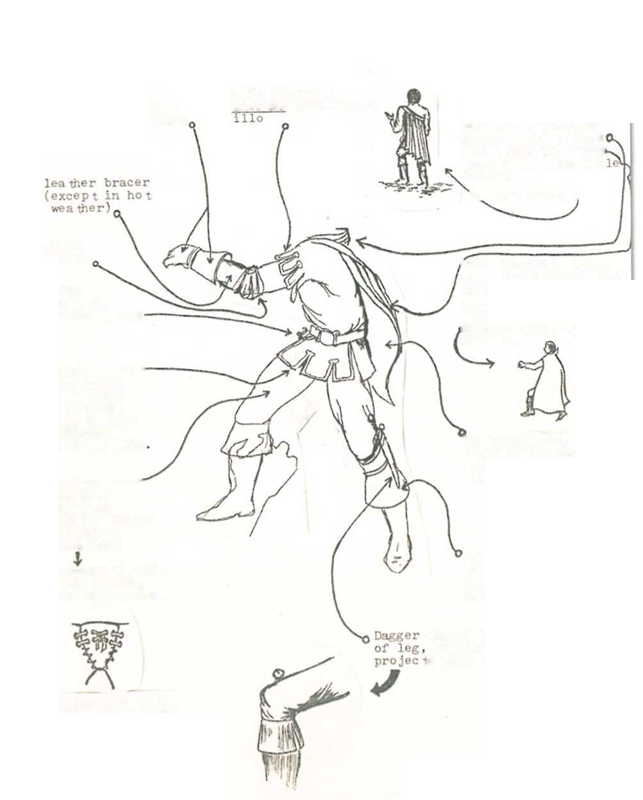
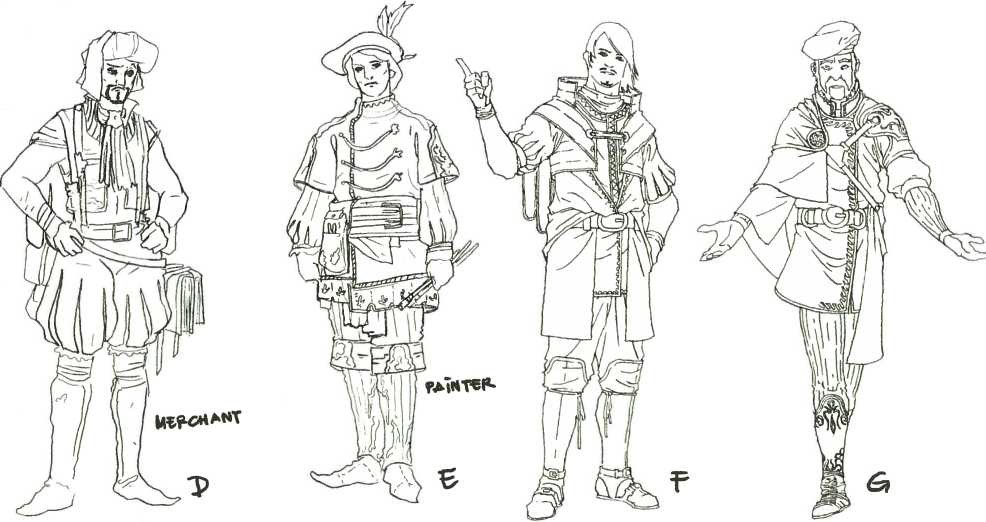
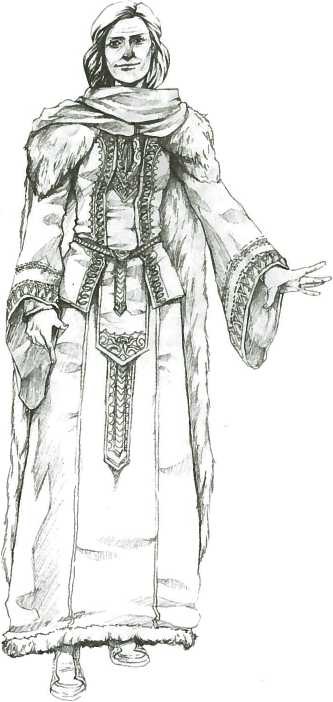
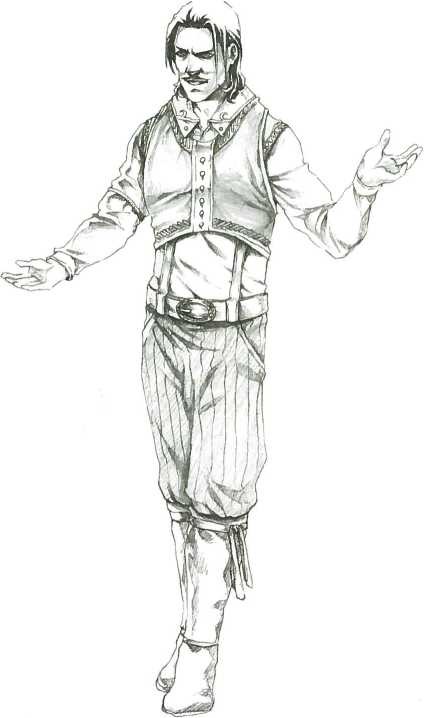
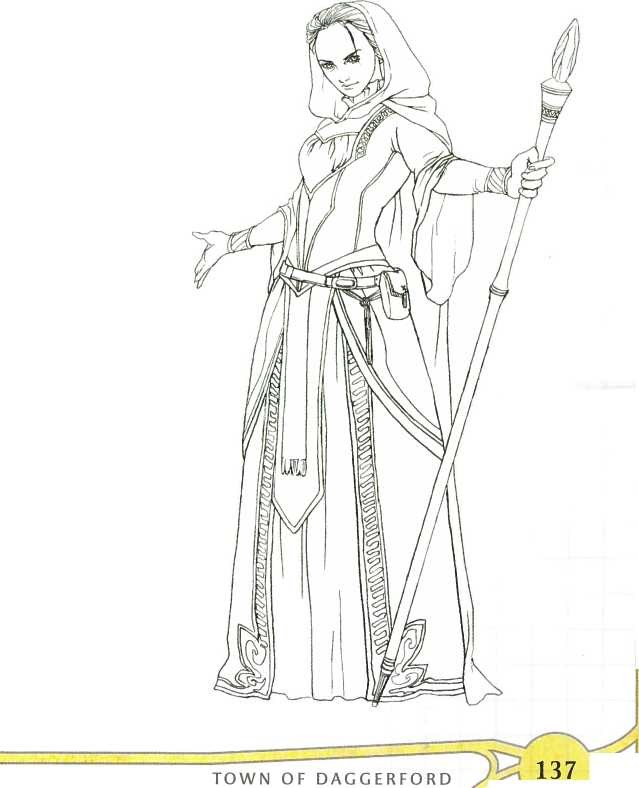

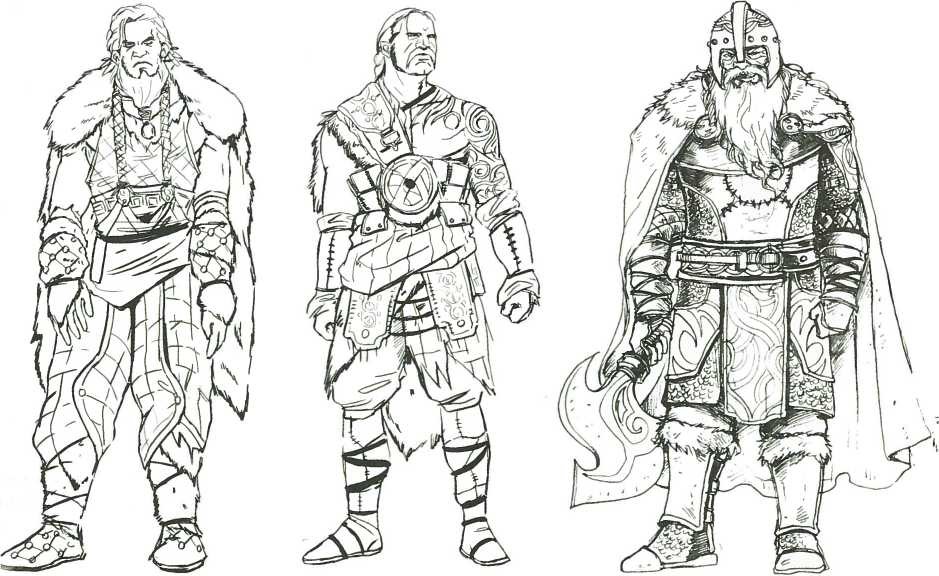





Комментарии